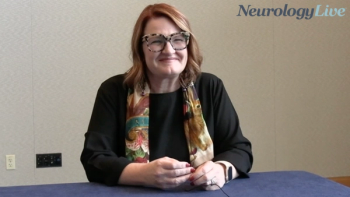
Bilateral MR-Guided Focused Ultrasound Shows Benefit for Managing Parkinson Motor Complications in Phase 3 Trial
Key Takeaways
- Staged, bilateral MRgFUS pallidothalamic tractotomy significantly improved motor function in Parkinson disease patients, with sustained benefits at 12 months post treatment.
- The trial enrolled 84 participants, showing a 50% improvement in MDS-UPDRS Part III OFF scores after unilateral treatment and 33.9% after bilateral treatment.
A phase 3 trial presented at the 2025 MDS Congress suggests that staged, bilateral magnetic resonance–guided focused ultrasound may improve motor symptoms for patients with Parkinson disease who experience motor complications.
Data from a phase 3 trial (NCT04728295) of staged, bilateral magnetic resonance–guided focused ultrasound (MRgFUS) pallidothalamic tractotomy presented as a late breaker at the
In the trial, 54 participants with PD received unilateral MRgFUS pallidothalamic tractotomy, and 40 patients proceeded to staged, bilateral treatment. At 3 months after unilateral treatment, findings showed that patients improved by 50% on the Movement Disorder Society Unified PD Rating Scale (MDS-UPDRS) Part III OFF (mean, 20.9 [SD, 5.3] to 10.0 [SD, 5.4]) and improved by 56.3% on Part IV (mean, 10.5 [SD, 3.5] to 4.6 [SD, 3.7]).
Following staged, bilateral treatment, researchers reported that participants improved by 33.9% on MDS-UPDRS Part III OFF and improved by 32% on Part III OFF total scores (mean, 51.3 [SD, 12.4] to 33.4 [SD, 11.4]; P <.0001). Presented by lead author María Cruz Rodríguez-Oroz, MD, director of the Department of Neurology at Clinica Universidad de Navarra, Pamploma, Spain, the study also noted that improvements were sustained through 12 months of post–bilateral procedure.
READ MORE:
This prospective, open-label, single-arm trial enrolled 84 patients across 9 international centers to investigate the safety and efficacy of staged, bilateral MRgFUS pallidothalamic tractotomy. Participants aged at least 30 years with PD and motor complications underwent unilateral MRgFUS pallidothalamic tractotomy, followed by staged, bilateral treatment at least 6 months later, if eligible. The primary efficacy was assessed by the change in MDS-UPDRS Part III OFF, bilateral upper and lower extremity score, at 3 months following staged, bilateral treatment. Secondary outcomes of the trial included MDS-UPDRS Part IV and Part III OFF total scores. Additionally, researchers assessed safety through treatment-emergent adverse events (AEs).
All told, AEs were reported as mostly mild or moderate in severity. Following unilateral treatment, authors noted that 30 treatment-related events occurred in 21 participants (87% mild; 0% severe) and 60% resolved in 6 months. After bilateral treatment, 43 events occurred in 22 participants (70% mild; 2% severe) and 40% resolved in 12 months. The most common related AEs included imbalance, dysarthria, and fatigue. Researchers noted that these findings may help guide clinicians and patients in selection and expectations for those who may consider this treatment procedure.
In July, the FDA approved the use of
REFERENCES
1. Cruz Rodríguez-Oroz M, Dalvi A, Zucker L, et al. A phase III, pivotal trial of staged, bilateral magnetic resonance-guided focused ultrasound pallidothalamic tractotomy for motor complications in Parkinson’s disease. Presented at: 2025 MDS Congress; October 5-9, 2025; Honolulu, Hawaii. Abstract LBA-21.
2. Insightec announces FDA approval of staged bilateral focused ultrasound treatment for Parkinson’s disease. News release. Insightec. July 8, 2025. Accessed July 9, 2025. https://insightec.com/news/insightec-announces-fda-approval-of-staged-bilateral-focused-ultrasound-treatment-for-parkinsons-disease/
Newsletter
Keep your finger on the pulse of neurology—subscribe to NeurologyLive for expert interviews, new data, and breakthrough treatment updates.


































